How to Restore Lead Acid Batteries
Restoring Lead Acid Batteries
This page will guide you through process of restoring an old, sulfated lead acid battery to like new conditions with almost no investment. The only required materials are a dead battery, distilled water and a homemade battery rejuvenator.
This process should restore any lead acid type battery that is sulfated due to old age or use. Inspect the battery for any physical defects. Burnt connectors, melted plastic housing, warped battery sides or visibly warped or badly damaged plates inside are signs that a battery can not be restored.
If no visible signs of damage are present, then most likely the battery can be restored using this method.
The battery pictured below was taken from under the hood of a car. The battery was ten years old and still in the car. It could barely hold a charge beyond 10.5 volts and was no longer able to start the engine.
First, wash the battery thoroughly with lots of water and baking soda. A soft brush is useful for any oil or dirt stuck on the battery. Dish soap can also be used to clean very dirty batteries. The baking soda reacts with the battery acid, rendering it harmless.
Next, carefully pry off the battery cell covers with a screwdriver. Wear old clothing or an apron to protect your clothes from battery acid. Acid will quickly eat through clothing. See the first photo below. Set the covers aside. Now you may want to use a shop vac to clean out any larger dirt particles. Be careful not to let any dirt fall into the battery cells. Take a damp paper towel and clean the area around the cell holes (See third photo). .
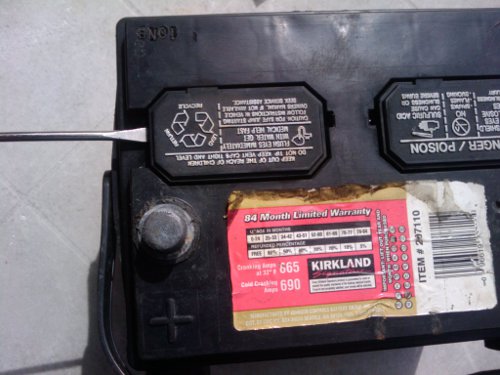
Carefully pry off the battery cell covers
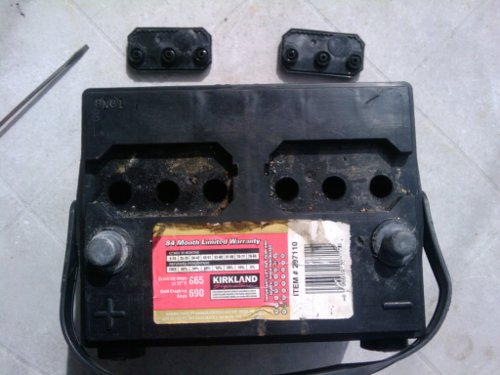
Covers removed from the battery cells
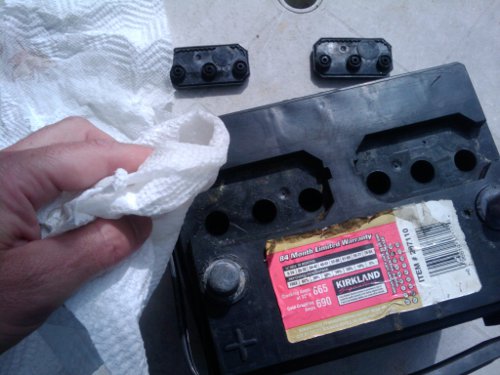
Clean around the cell holes with a damp towel
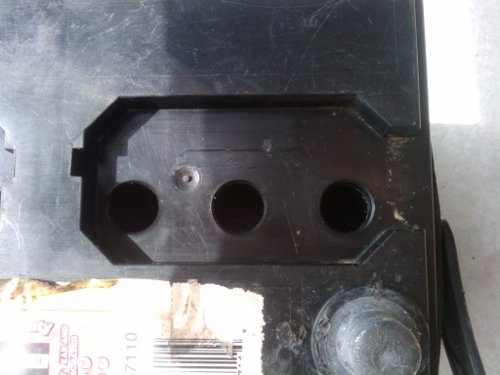
Finished cleaning the battery
In the photo below, you can just make out that the cells are bone dry. It was hard to get a good picture inside the cells. Fill the cells to just above the plates with distilled water. Do not use anything except for distilled water. Tap water has minerals that will corrode your battery. Some batteries, like this one, have a plastic cover over the plates. Fill to just above the top of the plastic cover. It is easier to use a smaller bottle to avoid messes when pouring. Pour slowly to prevent over filling. In the third photo below you can see the water level in the cells. The battery is now ready for charging. This battery actually took over 20 ounces of distilled water! It is amazing this battery was even still in use.
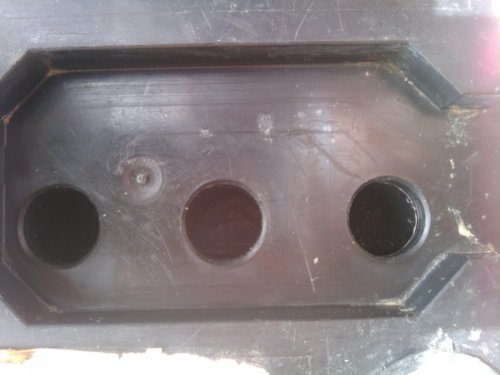
The battery cells are low on water
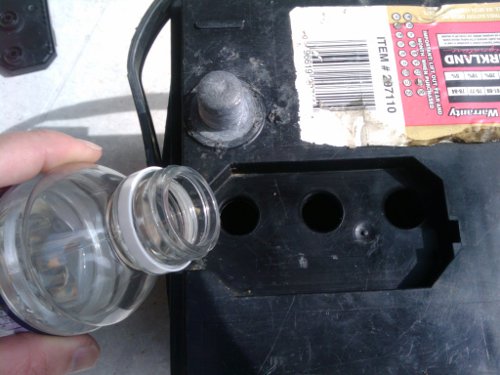
Fill the battery cells with distilled water
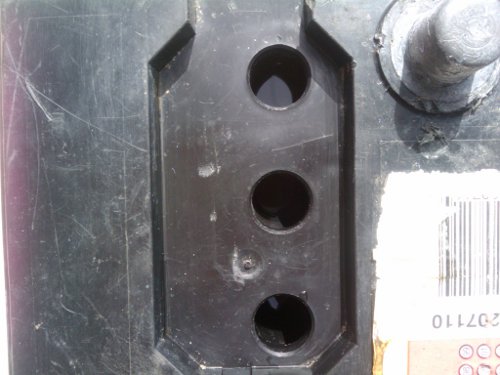
Cells are topped off properly
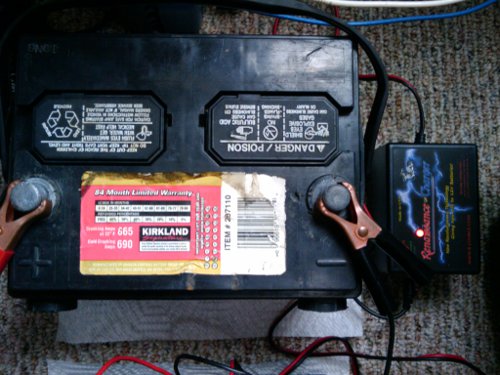
Charging the battery
In the last photo above, the battery is being restored with a professional radiant energy battery desulfator.
Optionally, you can make your own battery restoring charger by following the instructions on our DIY Battery Restorer page.
Conventional battery chargers will most likely not be able to charge your battery or you would not be on this web page in the first place. The special pulsed radiant energy used in the rejuvenators listed here break up the sulfation on the battery plates and restore the battery to full power. It may take multiple cycles on the charger to restore a very old or heavily sulfated battery. Often, as the battery nears its top charge level, you may want to slowly discharge the battery and recharge it on the rejuvenator again. With each cycle the battery will gain usable energy until it is fully desulfated. An auto light bulb and some wires are useful to slowly discharge the battery. Be careful and monitor the voltage while doing this. Do not discharge the battery below 11.5 volts so as not to cause any harm to the battery. Recharge the battery and repeat as needed until the battery is fully topped off. A fully charged auto battery will sit between 13.5 volts to 14.5 volts when finished.
Feel free to ask any questions or get help with your project on our Support Forum.
Final Notes:
Be very careful when working with batteries. Never work on a lead acid battery indoors. Always work in a well ventilated area. Batteries release explosive gasses when being charged.
Be careful working around battery acid. It is very corrosive and will burn skin, clothes and tools. Be sure to wash hands and tools thoroughly after working with lead acid batteries.
Disclaimer: The ideas presented here are for informational purposes only. Experiment at your own risk. We assume no responsibility whatsoever.
About the Author
| Troy Reid |



